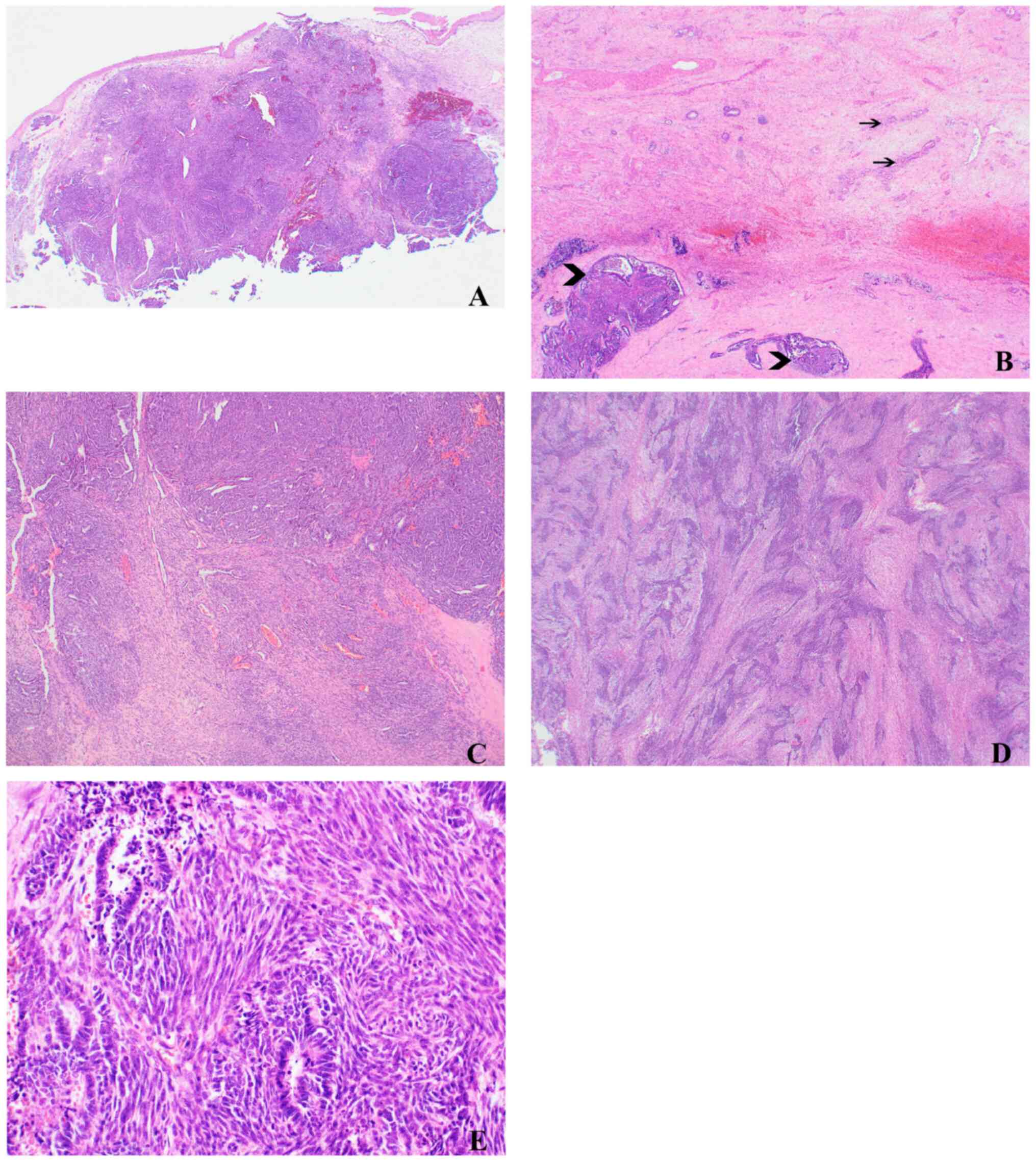Cervical malignant mixed mesonephric tumour: A case report with local recurrence after six-years and next-generation sequencing analysis with particular reference to the ataxia telangiectasia mutated gene
- Authors:
- Published online on: February 24, 2021 https://doi.org/10.3892/etm.2021.9825
- Article Number: 394
Metrics:
Total
Views: 0 (Spandidos Publications: | PMC Statistics:
)
Total PDF Downloads: 0 (Spandidos Publications: | PMC Statistics:
)
Abstract
Malignant mixed mesonephric tumours (MMMsT) of the female genital tract are extremely rare, and the majority are located in the wall of the cervix uteri. At present, there are no reports of the molecular characterisation of MMMsT of the female genital tract. Herein, we report the morphological, immunohistochemical and molecular features of this rare malignancy using next‑generation sequencing (NGS) analysis. A 58‑year‑old woman presented with vaginal bleeding. In 2013, she had been diagnosed with a cervical carcinosarcoma of probable mesonephric origin and International Federation of Gynaecology and Obstetrics (FIGO) stage IB that had been treated by total hysterosalpingo‑oopherectomy without adjuvant chemo‑radiotherapy. Ultrasonography showed a vaginal mass measuring 25 mm in the maximum dimension. Biopsy was performed and showed a biphasic neoplasm composed of adenocarcinoma and sarcoma. Immunohistochemistry showed positive staining for epithelial membrane antigen (EMA), pancytokeratin (MNF116), paired box 8 (PAX‑8), β‑catenin, cytokeratin 7, cyclin D1, GATA3 and CD10. Androgen receptor positivity was detected in very limited areas. Cytokeratin 20, carcinoembryonic antigen (CEA), oestrogen receptor (ER), progesterone receptor (PR), transcription termination factor 1 (TTF1), Wilm's tumour antigen‑1 (WT‑1), calretinin and p16 were negative. The immunohistochemical profile was consistent with mesonephric origin. NGS analysis identified a variant of the ataxia‑telangiectasia mutated (ATM) gene (p.Phe858Leu; c.2572 T>C; COSM21826). The number of detected allele frequency reads of ATM mutation following clinical relapse was higher, compared to its baseline: 65 vs. 96%. The differential diagnosis of MMMsT includes mesonephric hyperplasia, malignant mixed Mullerian tumour (carcinosarcoma), endometrioid adenocarcinoma and endometrial stromal sarcoma. The clinical significance of the observed ATM variant in the case reported herein is unknown. The present findings need further verification, as the mutation in ATM may result in chemotherapy resistance or conversely, may be exploited for targeted therapies.












